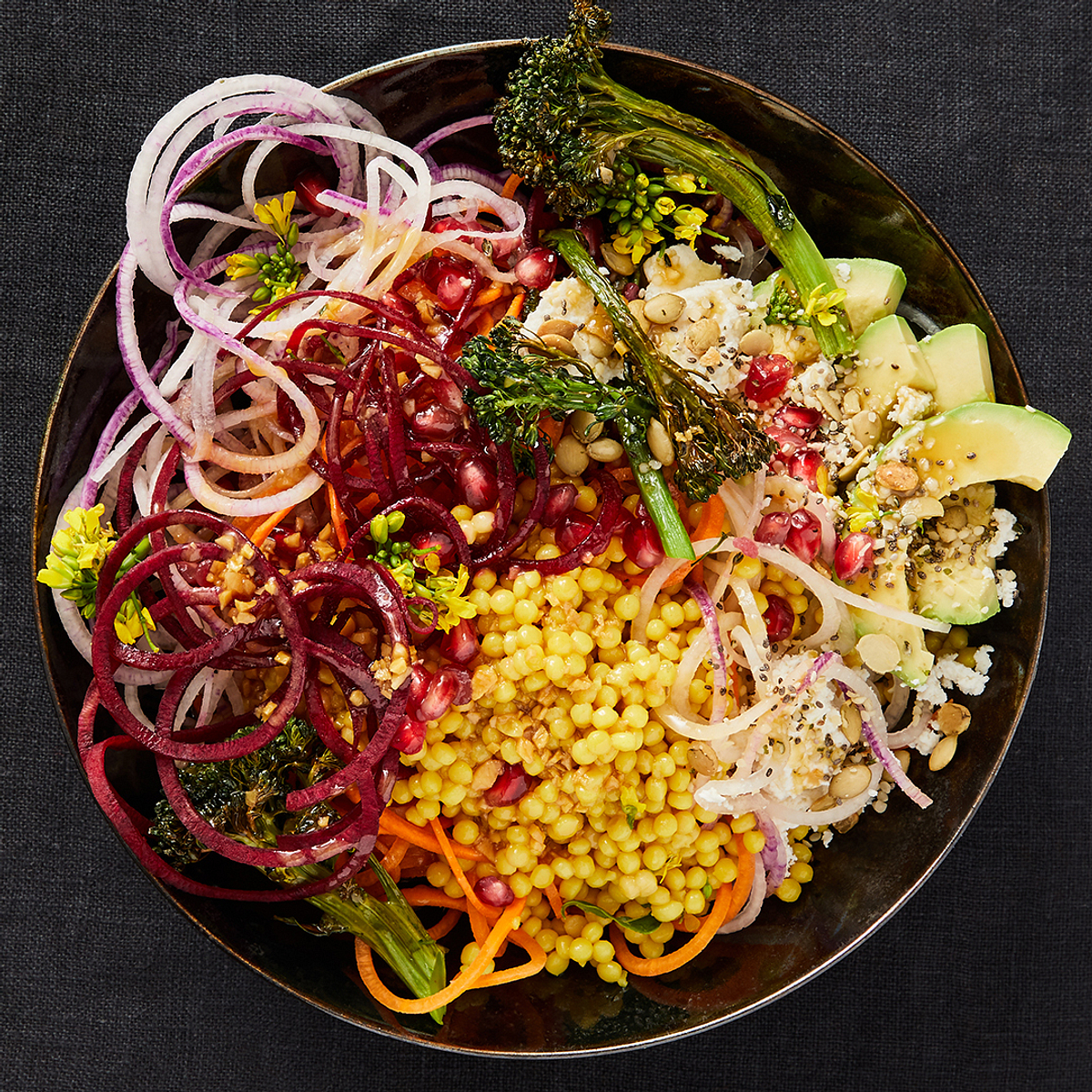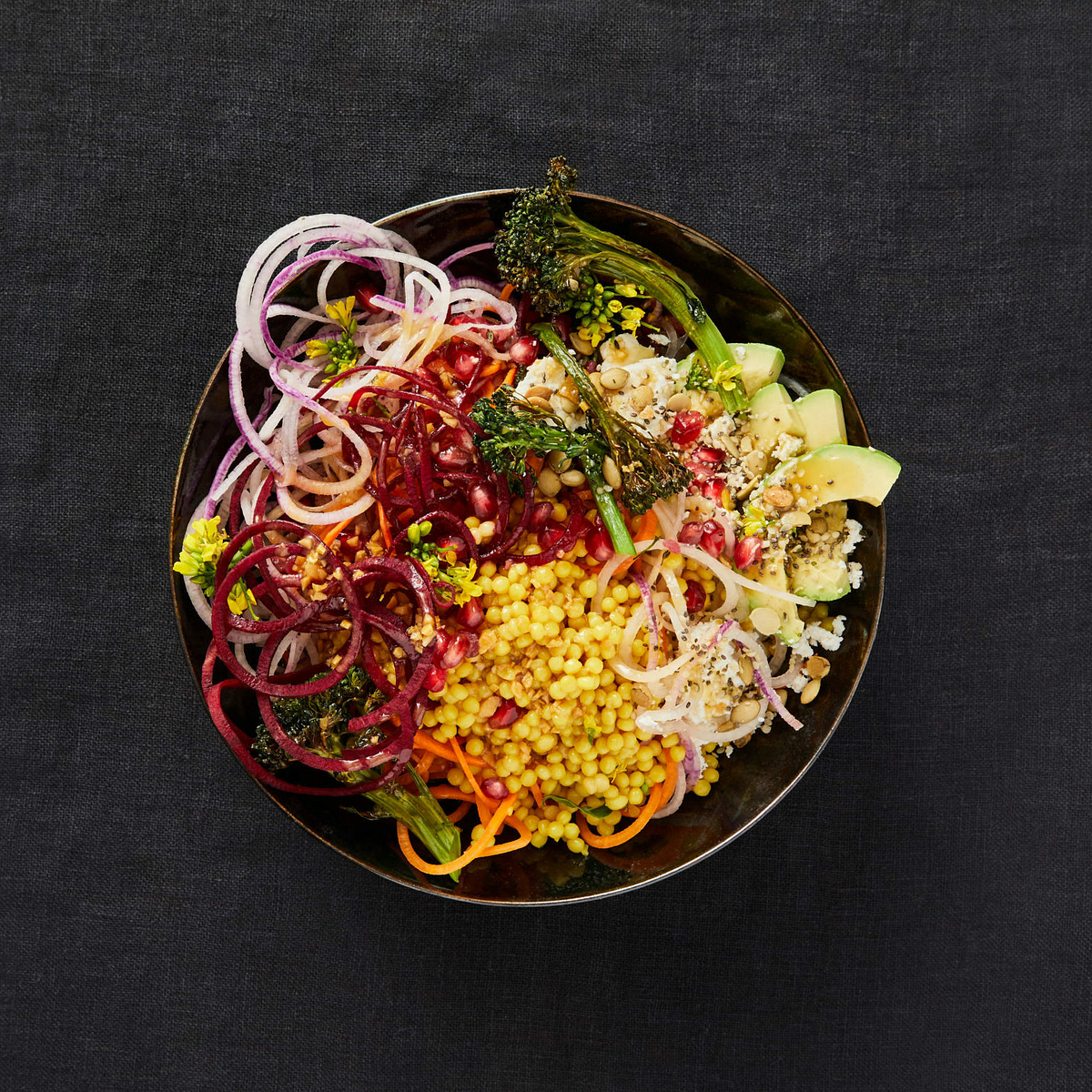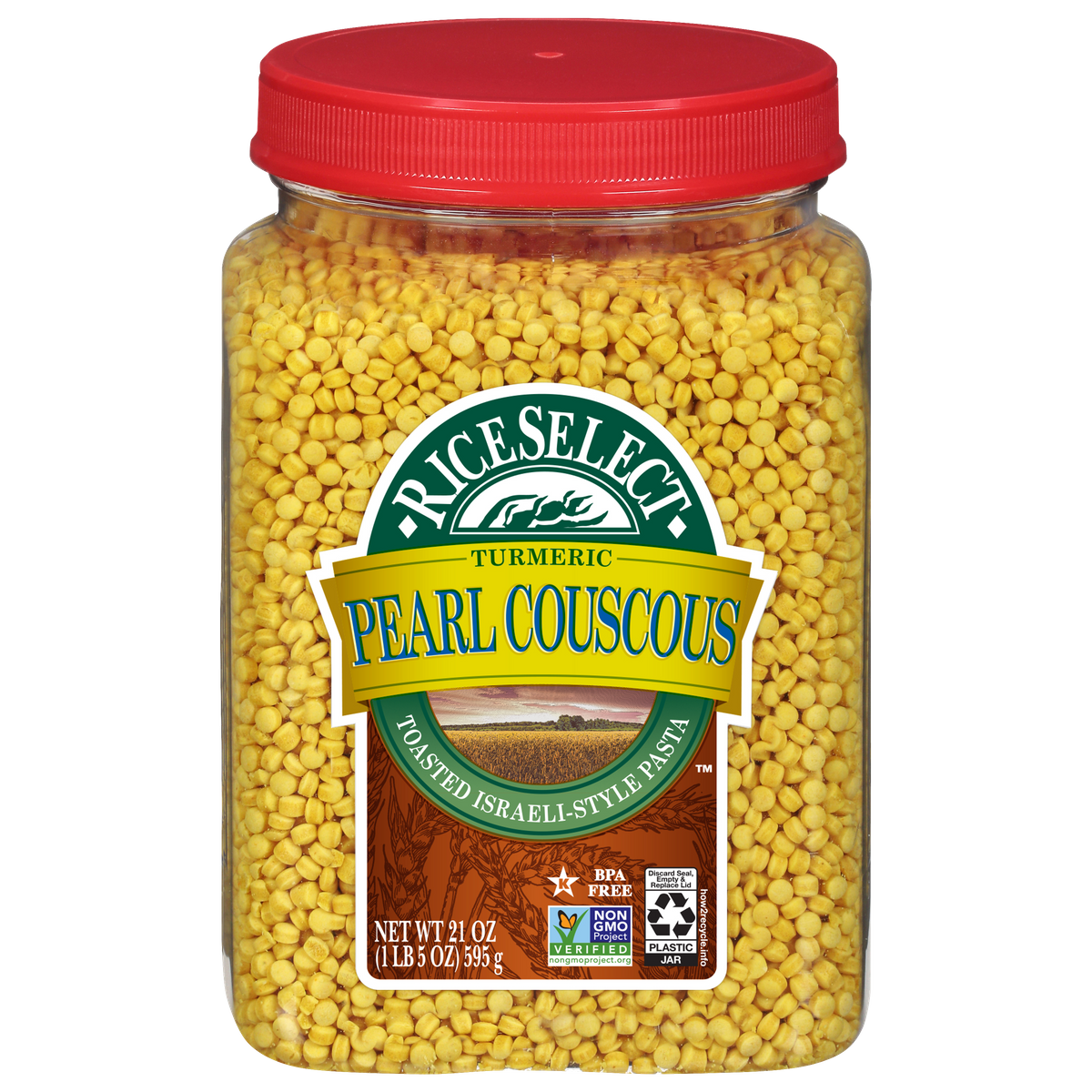Ingredients
- Broccolini & Feta:
- Glow Bowl:
Instructions
Broccolini & Feta Cheese: Preheat oven to 425°F. Toss together broccoli, oil, and half of the salt and pepper; arrange in single layer on parchment paper-lined baking sheet. Roast for 15 to 20 minutes or until tender and charred in spots.
Glow Bowl: Prepare couscous according to package directions. Whisk together oil, tamari, vinegar, tahini and honey until smooth; stir in garlic, ginger, salt and cayenne.
- Divide couscous among 4 bowls. Top with roasted broccolini, feta cheese, veggie noodles, avocado, pomegranate seeds, pumpkin seeds and chia seeds. Drizzle with tamari vinaigrette.
What is Tamari Sauce?
Despite the fact that you might think of soy sauce as a single condiment, there are actually dozens of different soy-based sauces from all around Asia, each with somewhat different tastes, appearances, and textures.
One of these sauces is tamari, which stands out for its unique flavor primarily due to the way it is manufactured in comparison to other soy sauces. Tamari is made by pressing the liquid that miso paste, or fermented soybean paste, releases over time. Contrarily, soy sauce is created by fermenting and brewing a blend of soybeans, wheat, and other grains. Tamari frequently costs a little more than soy sauce.
Tamari: How to Use it
Tamari is perfect for use as a dipping sauce due to its consistency and well-balanced flavor. In fact, Tamari is a great dipping sauce for sushi to soy sauce because it won't overpower the fish with salt. Tamari can also be used as a condiment for noodles, dumplings, fish (especially raw fish like sashimi), and tofu straight from the bottle. It can also be added to soups, stews, marinades, stir-fries, and Asian sauces.
What Does it Taste Like?
Because Tamari contains only soy, it has a mellow, less salty, and more complex flavor than regular soy sauce. Tamari doesn't have the harsh, almost vinegar-like flavor that the wheat in typical soy sauce can provide. Instead, Tamari is rich in umami, a flavor that is described as "mouthwatering" and "rich," and it may be used to give vegetarian and vegan meals a "meatiness." Umami is a flavor that can be found in beef, cooked mushrooms, tomato paste, aged cheeses, and dried fish.
Tamari Recipes
Tamari can be substituted for soy sauce in salads, stir-fries, sauces, and soups to give savory dishes a richer, less salty flavor.
Where to Buy ItTamari is simpler to find now that Asian cuisine has gained popularity over the past few years, along with other Asian ingredients. In a well-stocked store, you should be able to find tamari next to the soy sauce in glass bottles (or huge plastic jugs in bulk) in the Asian/international area. If the grocery store where you usually shop doesn't have it, try an Asian, international, or health food store, or order it online.
Try some Tamari sauce in our Thai Beef Salad with Black Rice
More Couscous Inspiration
For another couscous dish, learn how to make one of our Israeli couscous recipes.



